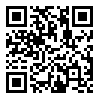Those funny-looking squares are popping up everywhere – and no wonder. Advertisers love QR codes, since they provide an easy way to engage with prospects. People with smart phones can scan the codes using the phone’s camera and immediately receive information from the advertiser such as text or a web page (QR stands for “quick response”).

Creating a QR code is easy: the code above was created for free using the Google url shortener: http://goo.gl/ . More important, though, is how to utilize the codes most effectively. Customers want to receive something they value when they scan the code – not just an ad. Some examples of the use of QR codes include directing consumers to online contests, games, recipes, book excerpts, performances, even how-to videos. Such engagement can result in prospects providing contact information, word-of-mouth referrals, and of course, sales. And remember to change the content over time, to keep it relevant and interesting.
To find ways to engage your prospects, give us a call at (818) 752-7210.
Sources: “Want More Information? Just Scan Me,” New York Times, September 21, 2011; “How to Use QR Codes to Market Your Business,” Inc.com